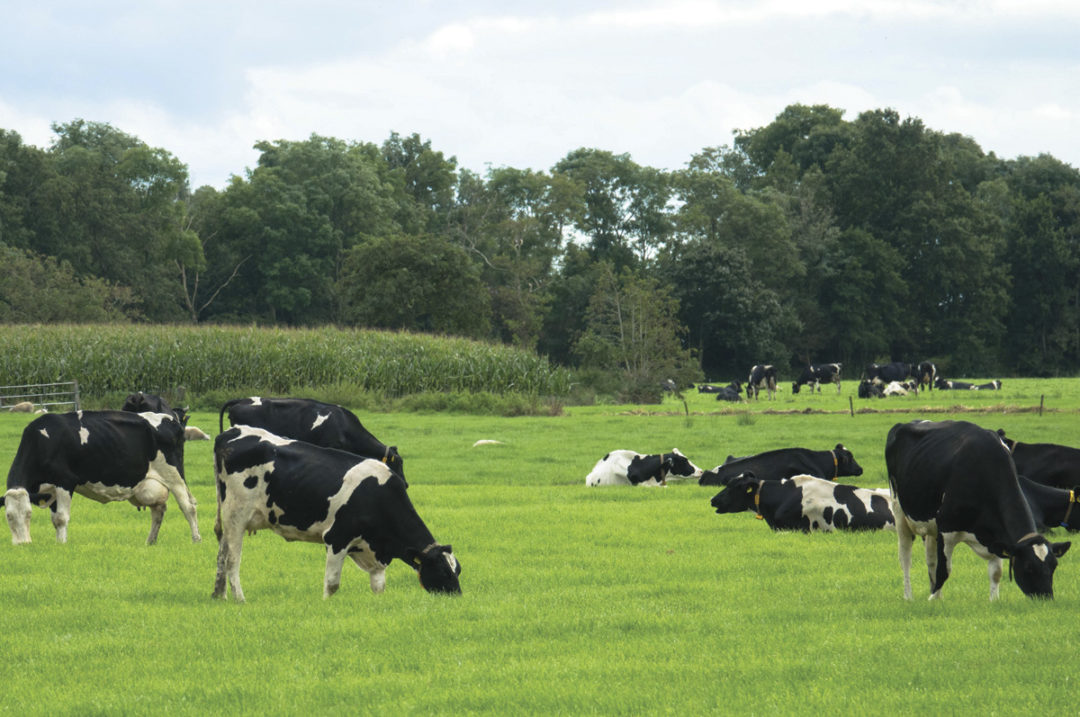Over the last three decades, automated milking systems and robotic dairy technology have changed how producers harvest their milk. Milking robots work 24 hours a day, seven days a week, 365 days a year, allowing producers to reimagine, redirect and optimize labor usage as well as create previously unattainable opportunities for efficiency gains and yield increases.
Producers employing this technology see a fundamental change from operating their dairies to managing them, which includes access to greater herd and production insight and accessibility to highly valuable, immediately actionable data, down to individual quarter metrics. With that data, producers can more effectively guide their reproduction programs, improve cow welfare and ensure the right cow is milked at the right time.
Why pasture grazing?
Before delving into the robotic element of the equation, it is important to know why some producers are choosing to graze their herds. While every producer has a unique set of reasons, motivators for grazing can largely be grouped into three categories.
- Mandatory. Producers seeking organic certification must adhere to specific pasture and grazing guidelines. USDA certification requires that during the grazing season, cows are provided pasture for a minimum 120 days per calendar year and that the pasture provides on average a minimum of 30% of their dry matter intake (DMI).
- Marketing. Given the choice between two otherwise identical cartons of eggs, more and more consumers will pick the one with the “free range” or “cage-free” label on it, even if it costs a little more. The same is true of milk. A growing public awareness of and concern for animal welfare means producers pasturing their herds can advertise that fact, potentially allowing them to command a premium price for their milk.
- Passion. These producers are grazing their herds based on principle and tradition and likely always have.
Incorporating robotic systems
The robotic aspect of milking a grazing herd is much the same as in a traditional one – cows are milked in automated milking units that exist within the barn. The primary difference is sending cows out to pasture and ensuring they regularly return to the robot for milking. Optimizing this condition is key. Two pieces of automated technology make up the requisite pieces for automated pasture grazing: the milking robot and an automated sort gate. The milking robot works as usual, enticing cows with a concentrate feed and determining milking permission based on the time since her last milking and/or the expected milk yield to be harvested. The automated sort gate is the unique and critical component for grazing herds and can be positioned directly off the milking robot or elsewhere in the barn, depending on layout and location of pasture.
An automated sort gate communicates with cows' ID collars and uses milking data through the herd management software to determine when a cow should be allowed to graze and when it should stay in the barn. An advantage of automated milking systems with sorting ability is they allow producers to focus resources mainly toward the cows that need attention. A typical rule of thumb is that 80% of a farmer’s time is spent on 20% of the cows. To achieve this, producers can program the automated sort gate to keep specific cows in the barn under the following conditions:
- Cows that are overdue for milking
- Cows close to achieving milking permission, typically set at 70% to 80%. For example, if a cow has milking permission every eight hours, then from six (or more) hours after her last milking she would be retained in the barn until successfully milked.
- Cows due to be bred based off activity and rumination flags triggered within the herd management software
- Fresh heifers in need of more training to visit the robots
- Cows with a high sick chance that is generated from activity collars (rumination, eating minutes, activity) and previous milking information (quality, quantity, temperature, etc.). The automated sort gate can be set to keep these cows in the barn for assessment and/or treatment.
This sort-ability benefits the producer in two main areas: personnel time management and milking the right cow at the right time. Retaining these cows saves the farmer time when executing these cow-touch tasks and keeps cows in need of milking close to the robotic milking units, reducing time spent fetching.
Tips, tricks and best practices
- The automated sort gate can be used to fulfill rotational or strip-grazing practices. Based on the grazing schedule, the gate can send cows to a different pasture than they had been in previously. This attraction to go to a fresh pasture can help draw cows back to the barn for milking.
- Create safe paths to and from the pasture. These paths should be wide enough to accommodate multiple cows and free from any potential hazards. Ideally, the path surface would be managed to limit rocks and mud. Some operations will even use rubber mats in the highest traffic areas near the sort gate to maintain traction.
- Have one-way gates dedicated to function as either an entrance or exit from the barn. Gates allowing bi-directional traffic can cause jams and prevent cows ready to be milked from returning to the barn or cows ready to graze from reaching the pasture.
- Align gate heights to the breed and size of your cows.
- It is critical that proper nutrient balance is achieved between the pasture, robot concentrate and partially mixed ration (if fed). A nutritionist experienced with grazing herds can be an asset.
- Ensure palatability of the concentrate fed in the milking robot. Knowing there is a sweet treat in the robot makes a cow more likely to return from pasture.
- If feeding a partially mixed ration, consider using an automated feed pusher or feeding robot for consistent access to feed at the fence.
- The more you see, the more you learn. If considering implementing automated milking systems, visit other farms and reach out to your local equipment dealer.












